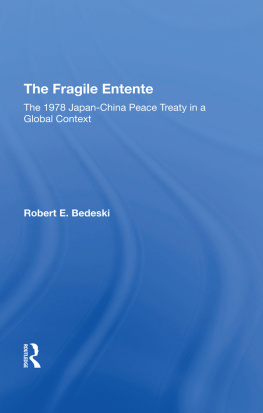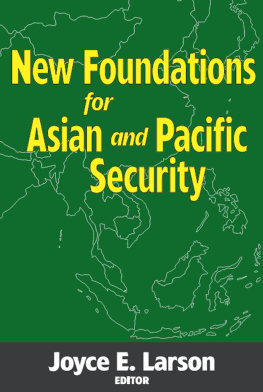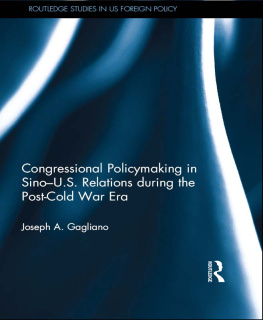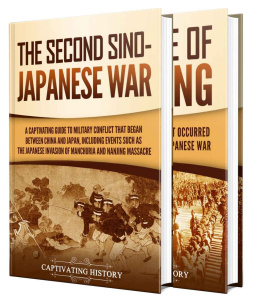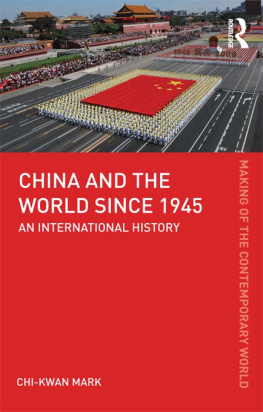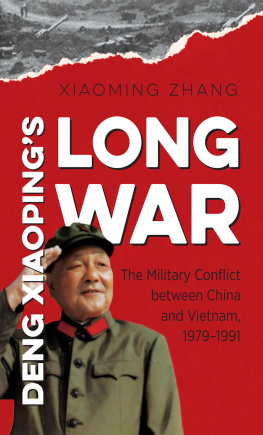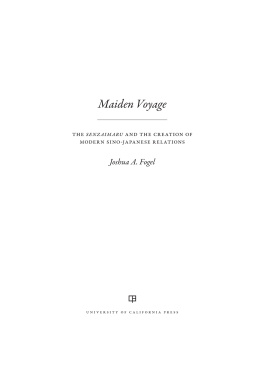The Fragile Entente
Westview Replica Editions
The concept of Westview Replica Editions is a response to the continuing crisis in academic and informational publishing. Library budgets for books have been severely curtailed. Ever larger portions of general library budgets are being diverted from the purchase of books and used for data banks, computers, micromedia, and other methods of information retrieval. Interlibrary loan structures further reduce the edition sizes required to satisfy the needs of the scholarly community. Economic pressures on the university presses and the few private scholarly publishing companies have severely limited the capacity of the industry to properly serve the academic and research communities. As a result, many manuscripts dealing with important subjects, often representing the highest level of scholarship, are no longer economically viable publishing projectsor, if accepted for publication, are typically subject to lead times ranging from one to three years.
Westview Replica Editions are our practical solution to the problem. We accept a manuscript in camera-ready form, typed according to our specifications, and move it immediately into the production process. As always, the selection criteria include the importance of the subject, the works contribution to scholarship, and its insight, originality of thought, and excellence of exposition. The responsibility for editing and proofreading lies with the author or sponsoring institution. We prepare chapter headings and display pages, file for copyright, and obtain Library of Congress Cataloging in Publication Data. A detailed manual contains simple instructions for preparing the final typescript, and our editorial staff is always available to answer questions.
The end result is a book printed on acid-free paper and bound in sturdy library-quality soft covers. We manufacture these books ourselves using equipment that does not require a lengthy make-ready process and that allows us to publish first editions of 300 to 600 copies and to reprint even smaller quantities as needed. Thus, we can produce Replica Editions quickly and can keep even very specialized books in print as long as there is a demand for them.
About the Book and Author
The Fragile Entente: The 1978 Japan-China Peace Treaty in a Global Context
Robert E. Bedeski
Between early 1978 and late 1980, power relationships in the Pacific region underwent historic transformation. Deng-Xiaoping, re-emerging as a key leader in the Peoples Republic of China, demonstrated pragmatism in domestic and foreign policy. Beijing negotiated a Peace and Friendship Treaty with Japan, apparently opening an era of Sino-Japanese economic cooperation. Moscow viewed this development with alarm, fearing it would lead to a three-way alliance including the United States. Meanwhile, Japan foreswore any military significance in closer links with the PRC, but by succumbing to the Chinese demand for inclusion of a treaty clause denouncing Soviet hegemony, became an involuntary participant in the Sino-Soviet conflict.
In this environment, the Sino-Japanese treatywhich might have been an innocuous footnote to postwar history--became an event marking a new phase in East Asian affairs. Dr. Bedeski draws on Chinese, Soviet, and Japanese sources to clarify the relationships among the wide range of events ensuing from the treaty and points to its relevance to a new era of Sino-Soviet relations. The irony of the Peace and Friendship Treaty, he concludes, is that_.it probably was a catalyst of insecurity and hostility in the region and that it became an important event leading to the participation of non-Communist actorsJapan, the U.S., and NATOin the Sino-Soviet conflict.
Robert E. Bedeski studied Chinese in Taiwan and received a Ph.D. in political science at the University of California, Berkeley. This book was written while Professor Bedeski was a research fellow of the Japan Foundation at the National Defense College in Tokyo. Currently a professor of political science at Carleton University in Ottawa, he is the author of State-Building in Modern China: The Kuomintang in the Prewar Period.
First published 1983 by Westview Press
Published 2019 by Routledge
52 Vanderbilt Avenue, New York, NY 10017
2 Park Square, Milton Park, Abingdon, Oxon OX14 4RN
Routledge is an imprint of the Taylor & Francis Group, an informa business
Copyright 1983 by Taylor & Francis
All rights reserved. No part of this book may be reprinted or reproduced or utilised in any form or by any electronic, mechanical, or other means, now known or hereafter invented, including photocopying and recording, or in any information storage or retrieval system, without permission in writing from the publishers.
Notice:
Product or corporate names may be trademarks or registered trademarks, and are used only for identification and explanation without intent to infringe.
Library of Congress Cataloging-in-Publication Data
Bedeski, Robert E.
The fragile entente.
(A Westview replica edition)
Bibliography: p.
1. Japan--Foreign relations--China 2. China--
Foreign relations--Japan. 3. World politics--1975-1985.
I. Title II. Title: Japan-China Peace Treaty in a
global context.
DS849.C6B42 1983327.09582-21990
ISBN 13: 978-0-367-29228-7 (hbk)
To Kathleen
Research and writing for this study was made possible by a research grant from the Japan Foundation. Other assistance was provided by the Social Science and Humanities Research Council of Canada. The author wishes to express appreciation to Carleton University, the Faculty of Social Sciences, and the Department of Political Science for support. In Tokyo, the National Defense College provided access to library resources and a pleasant environment, and the author is grateful to the faculty and staff of the College. Mr. Kitahara Iwao, Embassy of Japan, Ottawa, Mihara Asahiko in Tokyo, and the staff at the International House Library were helpful in making the time fruitful in accomplishing my research.
The author also wishes to thank various Diet members, officials at the Defense Agency and Foreign Ministry, and Keidanren, and General Kurisu Hiromi. In Ottawa, special thanks is due to Professor Henry Mayo, Mrs. Betty Weiss and Caroline Caiger. International Journal and Issues and Studies have given permission to include previously published material in this book.
Finally, my wife Kathleen helped in numerous aspects of the project and provided indispensable moral support in its completion. The author alone is responsible for conclusions and materials herein.
Robert E. Bedeski
1
Introduction
The Peace Treaty between Japan and China was signed nearly a third of a century after the end of hostilities. It was concluded after nearly six years of normalization, but had been expected much sooner. By 1978, the global situation, regional alignments, and post-Mao government in China had changed significantly. China under the leadership of Deng Xiaoping was seeking allies against the USSR, and insisted that the Japanese align themselves against hegemony - the code word for Soviet expansionism. US President Carter was planning to withdraw all ground forces from Asia in the aftermath of the Vietnam war. The Soviets were building up their military forces in East Asia.
In this environment, the Sino-Japan Treaty - which might have been an innocuous footnote to postwar history - became an event marking a new phase in East Asian affairs. By acquiescing to the Chinese demand for inclusion of the hegemony clause, Japan became an involuntary participant in the Sino-Soviet conflict and was followed by the more enthusiastic Americans within a few months. Possibly heartened by these diplomatic successes, which were to bring billions of dollars in trade and credits, Beijing attacked Vietnam in 1979, risking that the USSR would not counterattack to save its ally.

